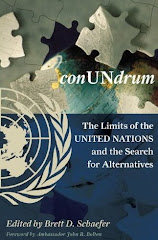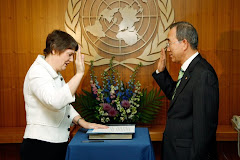CLICK HERE TO GO TO REUTERS PAGE AND READ THIS ARTICLE
(Reuters) - Clean cookstoves that burn more efficiently and channel smoke outside could save millions of lives around the world, but only if the cooks themselves are part of the solution, scientists reported on Thursday.
The Global Alliance for Clean Cookstoves (cleancookstoves.org), headed by the United Nations Foundation and championed by U.S. Secretary of State Hillary Clinton, seeks to cut down on indoor air pollution in some of the globe's poorest countries, where the most common way to cook is on an open fire inside the home.
These household cooking fires contribute to 2 million deaths annually, more than are caused by malaria, according to the World Health Organization, which makes this the leading environmental cause of death.
To help change this, some $150 million to $200 million worth of research needs to be done over the next decade to see that clean cookstoves get into the homes of the women most vulnerable to the hazards of indoor pollution, the scientists wrote in the journal Science.
The research should include examinations of respiratory, cardiovascular and cancer risks as well as such life-cycle concerns as maternal, neonatal and child health, said Dr. William Martin II of the U.S. government's National Institutes of Health, one of the report's authors.
"The role of women in reducing the health risks associated with household air pollution is critical," Martin wrote from Moscow in response to emailed questions. "They are almost always the end users of the new stove of fuel technology. If it does not meet their needs, it will not be used, end of story."
The cookstoves are barely stoves at all, frequently just three flat stones to sit a pot on over a fire of twigs, without a chimney to get the smoke out of the house.
WOMEN AND CHILDREN AT HIGHEST RISK
Women and children living in extreme poverty are at the highest risk of health problems from household smoke, because they tend to stay home during the day, while men are away and less exposed to indoor air pollution, the report said.
Women and girls often are the fuel-gatherers, a time-consuming and hazardous task that can put them at risk of attacks when they venture far from their villages. The cooking fire is frequently just three flat stones to sit a pot on over a fire of twigs, without a chimney to get the smoke out of the house.
More efficient stoves could cut the amount of fuel needed, and the risk to those who gather it.
The idea of getting safer cookstoves into the homes of nearly 3 billion of the world's poorest people has been tried for decades, but with limited success, the scientists wrote.
There has been a lack of awareness of the problem, limited research into the health risks, a lack of affordable stoves and fuels and the logistical hurdle of distribution in poor areas.
Research could also address just how much emissions of smoke and soot must be reduced by cleaner cookstoves to produce substantial health benefits.
Giving the stoves away does not work, since that devalues them in the eyes of users, but making them too costly is another drawback, the scientists found.
Men are often concerned about the price of the stoves, but if they are shown to save money on fuel and if the stoves can be paid for in a matter of months, they see long-term savings and become more enthusiastic, Miller wrote.
There is no one-size-fits-all solution, he wrote, because "cooking is one of the most unique cultural practices around the world." This means the design must be adaptable even if the inner workings are quite similar.
Thursday, October 13, 2011
Subscribe to:
Post Comments (Atom)
















































No comments:
Post a Comment